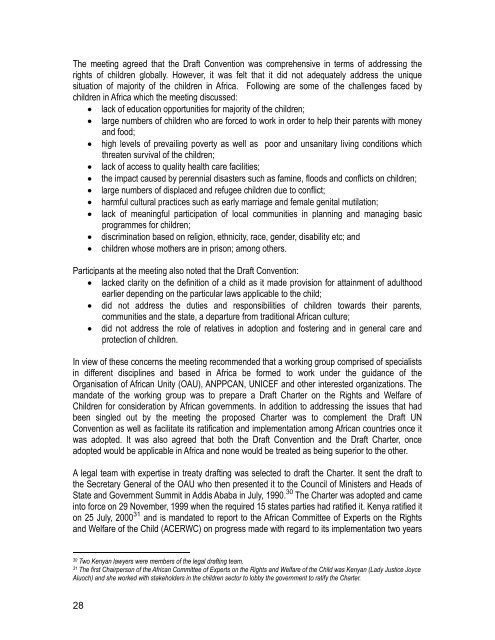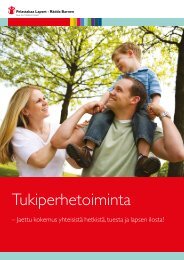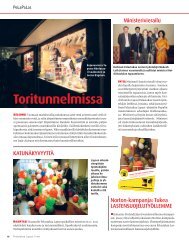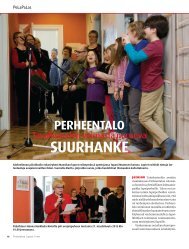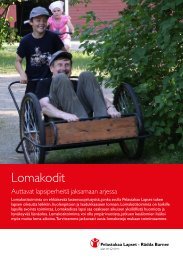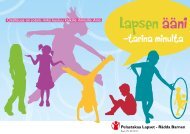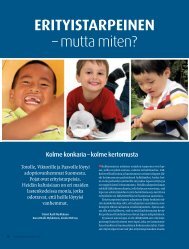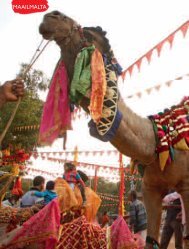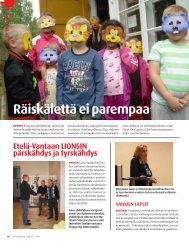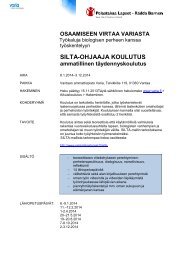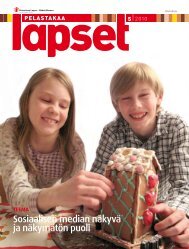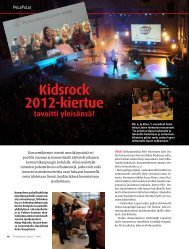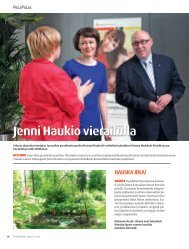Promoting child rights in Kenya - Pelastakaa Lapset ry
Promoting child rights in Kenya - Pelastakaa Lapset ry
Promoting child rights in Kenya - Pelastakaa Lapset ry
Create successful ePaper yourself
Turn your PDF publications into a flip-book with our unique Google optimized e-Paper software.
The meet<strong>in</strong>g agreed that the Draft Convention was comprehensive <strong>in</strong> terms of address<strong>in</strong>g the<strong>rights</strong> of <strong>child</strong>ren globally. However, it was felt that it did not adequately address the uniquesituation of majority of the <strong>child</strong>ren <strong>in</strong> Africa. Follow<strong>in</strong>g are some of the challenges faced by<strong>child</strong>ren <strong>in</strong> Africa which the meet<strong>in</strong>g discussed: lack of education opportunities for majority of the <strong>child</strong>ren; large numbers of <strong>child</strong>ren who are forced to work <strong>in</strong> order to help their parents with moneyand food; high levels of prevail<strong>in</strong>g poverty as well as poor and unsanita<strong>ry</strong> liv<strong>in</strong>g conditions whichthreaten survival of the <strong>child</strong>ren; lack of access to quality health care facilities; the impact caused by perennial disasters such as fam<strong>in</strong>e, floods and conflicts on <strong>child</strong>ren; large numbers of displaced and refugee <strong>child</strong>ren due to conflict; harmful cultural practices such as early marriage and female genital mutilation; lack of mean<strong>in</strong>gful participation of local communities <strong>in</strong> plann<strong>in</strong>g and manag<strong>in</strong>g basicprogrammes for <strong>child</strong>ren; discrim<strong>in</strong>ation based on religion, ethnicity, race, gender, disability etc; and <strong>child</strong>ren whose mothers are <strong>in</strong> prison; among others.Participants at the meet<strong>in</strong>g also noted that the Draft Convention: lacked clarity on the def<strong>in</strong>ition of a <strong>child</strong> as it made provision for atta<strong>in</strong>ment of adulthoodearlier depend<strong>in</strong>g on the particular laws applicable to the <strong>child</strong>; did not address the duties and responsibilities of <strong>child</strong>ren towards their parents,communities and the state, a departure from traditional African culture; did not address the role of relatives <strong>in</strong> adoption and foster<strong>in</strong>g and <strong>in</strong> general care andprotection of <strong>child</strong>ren.In view of these concerns the meet<strong>in</strong>g recommended that a work<strong>in</strong>g group comprised of specialists<strong>in</strong> different discipl<strong>in</strong>es and based <strong>in</strong> Africa be formed to work under the guidance of theOrganisation of African Unity (OAU), ANPPCAN, UNICEF and other <strong>in</strong>terested organizations. Themandate of the work<strong>in</strong>g group was to prepare a Draft Charter on the Rights and Welfare ofChildren for consideration by African governments. In addition to address<strong>in</strong>g the issues that hadbeen s<strong>in</strong>gled out by the meet<strong>in</strong>g the proposed Charter was to complement the Draft UNConvention as well as facilitate its ratification and implementation among African countries once itwas adopted. It was also agreed that both the Draft Convention and the Draft Charter, onceadopted would be applicable <strong>in</strong> Africa and none would be treated as be<strong>in</strong>g superior to the other.A legal team with expertise <strong>in</strong> treaty draft<strong>in</strong>g was selected to draft the Charter. It sent the draft tothe Secreta<strong>ry</strong> General of the OAU who then presented it to the Council of M<strong>in</strong>isters and Heads ofState and Government Summit <strong>in</strong> Addis Ababa <strong>in</strong> July, 1990. 30 The Charter was adopted and came<strong>in</strong>to force on 29 November, 1999 when the required 15 states parties had ratified it. <strong>Kenya</strong> ratified iton 25 July, 2000 31 and is mandated to report to the African Committee of Experts on the Rightsand Welfare of the Child (ACERWC) on progress made with regard to its implementation two years30Two <strong>Kenya</strong>n lawyers were members of the legal draft<strong>in</strong>g team.31The first Chairperson of the African Committee of Experts on the Rights and Welfare of the Child was <strong>Kenya</strong>n (Lady Justice JoyceAluoch) and she worked with stakeholders <strong>in</strong> the <strong>child</strong>ren sector to lobby the government to ratify the Charter.28


